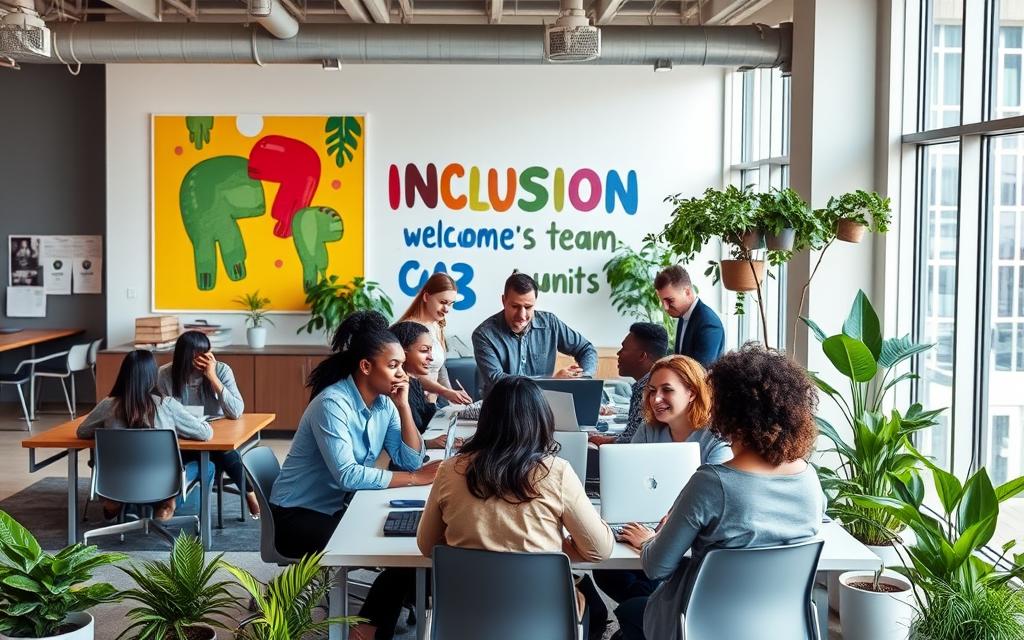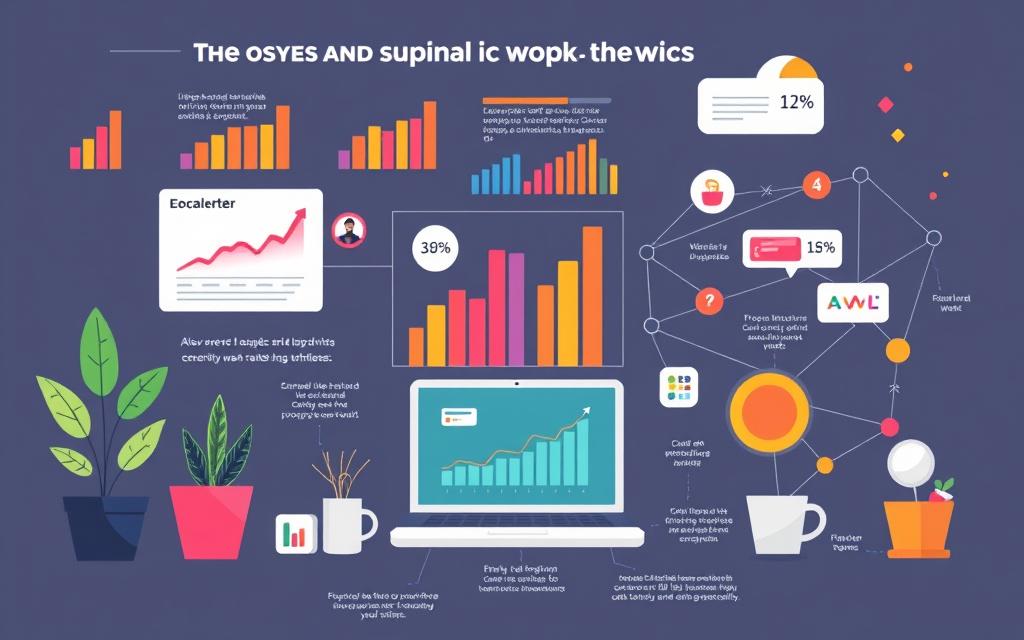Diversity in the workplace is becoming increasingly important as organizations begin to recognize its immense value in fostering an inclusive environment. Recent surveys indicate that 57% of employees believe their organizations should be more diverse. However, many companies face numerous challenges in workplace diversity, including language barriers and regional disparities. These diversity obstacles can hinder effective communication among team members, ultimately impacting productivity and efficiency.
As organizations navigate through the complexities of remote and hybrid work models, the challenges in workplace diversity can become more pronounced. Misunderstandings can easily arise when team members come from different cultural backgrounds, requiring companies to address these issues thoughtfully. Effectively tackling these problems is crucial to realizing DEI improvements, as diverse teams enrich discussions and drive innovative ideas that add significant value to the quality of work produced.
Understanding the Importance of Workplace Diversity
Embracing workplace diversity can transform your organization in numerous ways. A diverse workforce introduces various perspectives, fostering an environment where creativity and innovation thrive. By understanding the benefits of diversity, you can better appreciate the value of workplace integration and its role in driving success.
The Benefits of a Diverse Workforce
Statistics reveal that organizations with a diverse workforce enjoy significant advantages. For instance, diverse teams experience a 60 percent improvement in decision-making. Additionally, companies that focus on inclusivity see up to 19 percent higher revenue and are 70 percent more likely to capture new markets. This shows that active efforts towards diversity yield impressive benefits for your business.
How Diversity Drives Innovation and Creativity
Diverse work environments increase creativity and promote innovative thinking. Research from Deloitte highlights that companies with significant racial and ethnic diversity are 35 percent more likely to outperform competitors. Furthermore, inclusive teams can enhance team performance by up to 30 percent. This enhancement stems from various viewpoints working together to solve problems, ultimately fostering a culture of creativity.
Connecting with Diverse Customer Bases
Understanding the diverse needs of your customer base is crucial for success. Companies with a focus on diversity are better positioned to connect with various demographics, ensuring customer satisfaction and loyalty. A whopping 67 percent of workers consider diversity while seeking employment, indicating that attracting top talent ties directly to your commitment to inclusion.
| Aspect | Impact |
|---|---|
| Diversity in Leadership | 3.5% increase in EBIT for every 10% increase in gender diversity (McKinsey) |
| Team Decision-Making | 60% improvement in non-diverse teams’ performance (Cloverpop) |
| Financial Performance | 25% greater likelihood of profitability in diverse organizations |
| Market Reach | 70% more likely to capture new markets |
| Cash Flow | 2.3 times higher cash flow per employee in diverse companies (Deloitte) |
Recognizing these diverse workforce advantages will inspire you to foster an inclusive workplace culture, promoting innovation, better decision-making, and a deep connection with your customers. By doing so, you position your organization for growth and sustainability in today’s competitive landscape.
Challenges in Workplace Diversity
Fostering a diverse workplace can yield numerous benefits, yet it is not without its challenges. Identifying and addressing these diversity challenges is crucial for promoting an inclusive work environment. You may discover that communication barriers and cultural misunderstandings significantly impede collaboration and progress. Understanding the nature of these challenges can help in devising effective strategies for improvement.
Communication Barriers Among Diverse Teams
Effective communication stands as a cornerstone of team success. In diverse teams, varying communication styles can lead to misunderstandings and decreased productivity. The presence of different languages, slang, and generational differences creates potential communication barriers. It is essential to provide guidance on appropriate communication channels and preferences, allowing for smoother interactions among team members. Statistics reveal that a significant number of employees feel their organizations must address these barriers to enhance team cohesion.
Cultural Differences and Misunderstandings
Cultural differences can create complexities within teams. While diversity enriches perspectives, it may also result in conflicts if misunderstandings arise. You might notice that differing customs or expectations can lead to unintentional biases, affecting interpersonal relationships. A myriad of experiences and needs, including those of transgender individuals or parents requiring flexible work hours, highlights the significance of understanding diverse backgrounds. Engaging in cultural awareness training can facilitate better communication and mutual respect among team members.
The Impact of Bias on Team Dynamics
The presence of bias in the workplace can create management hurdles detrimental to collaboration. Discrimination based on factors such as age, race, or gender exacerbates existing tensions and undermines a team’s ability to function effectively. Statistics indicate a concerning percentage of employees have encountered such biases, leading to a culture of distrust among team members. Addressing these issues through open discussions and a clear Code of Conduct can foster an inclusive environment, essential for improving overall workplace dynamics. Recognizing and curbing biases is vital for ensuring everyone’s voice is valued in discussions.
Strategies for Overcoming Communication Barriers
To build an effective and inclusive workplace, addressing communication barriers is essential. Organizations can employ various communication strategies to foster a culture of understanding and respect among diverse teams. These practices not only promote collaboration but also contribute to bias reduction throughout the organization.
Establishing Clear Communication Policies
Implementing clear communication policies sets the foundation for effective interactions among employees. Research indicates that organizations with such policies experience a 40% increase in efficiency. By defining roles and responsibilities through detailed job descriptions, companies can also see a 25% reduction in overlap and gaps in team efforts. This clarity enhances understanding and reduces the likelihood of miscommunication.
Adopting Inclusive Language Practices
Using inclusive language is crucial in creating an environment where all employees feel valued. Clear and simple language helps avoid confusion and frustration. Studies highlight that training in active listening leads to a 30% improvement in communication effectiveness within diverse teams. Engaging with employees through tailored communication enhances rapport and ensures that messages resonate well, significantly aiding in overcoming communication barriers.
Encouraging Open Dialogue Among Employees
Fostering a culture that encourages open dialogue allows team members to express their thoughts without fear of judgment. A study showed that 67% of employees believe that transparent communication is vital for promoting an effective workplace. Companies that align their communication strategies with employee feedback mechanisms can witness a 15% improvement in overall communication practices, leading to a 20% increase in employee satisfaction and collaboration.
Creating an Inclusive Culture
Establishing an inclusive culture within your organization is essential for fostering belonging among your employees. This process involves implementing effective diversity training programs that promote empathy and understanding, ultimately leading to a more cohesive workplace.
Implementing Diversity Training Programs
Diversity training serves as a foundation for cultivating an inclusive culture. Regular programs educate employees on cultural differences and encourage open-mindedness. Statistics highlight a significant challenge: only 34% of employees feel that inclusion is genuinely valued within their workplace. This indicates that training must be continuous and sincere, demonstrating a commitment to celebrating diversity at every level of the organization.
Highlighting and Celebrating Cultural Differences
Recognizing and celebrating cultural differences strengthens the sense of community. Organizing events around traditional festivals and acknowledging diverse religious observances can enhance employee engagement. Such initiatives not only showcase respect for individual backgrounds but also diminish the feelings among minority employees who are statistically 39% less likely to feel recognized. Addressing these gaps can lead to a more vibrant and inclusive atmosphere.
Change towards inclusivity may take time, similar to cultivating a Chinese bamboo tree, where growth beneath the surface is essential before visible success occurs. By actively fostering conversations and developing safe spaces, you invite employees to share their experiences and perspectives, reinforcing everyone’s role in the workplace. Employing feedback methods, such as listening cultures, empowers organizations to adapt practices effectively and ensure all voices are heard.
| Statistics | Percentage |
|---|---|
| Employees who feel inclusion is valued | 34% |
| Minority employees lacking recognition | 39% |
| Female employees lacking recognition | 34% |
| Employees who find company efforts sincere | 44% |
Embracing an inclusive culture is not only beneficial for workforce retention but also crucial for enhancing overall employee morale. Understanding and implementing diversity training while celebrating all cultural contributions creates a vibrant workplace where everyone feels valued.
Aligning Diversity Initiatives with Organizational Goals
To effectively promote diversity within your organization, it is essential to align diversity initiatives with your broader organizational goals. This strategic approach ensures that your diversity objectives support and enhance your company’s vision and mission. Conducting regular surveys for feedback offers essential insights into employee perspectives, allowing for a better understanding of how diversity efforts are perceived. Regular feedback helps in identifying areas for improvement and fosters an environment of continuous growth.
Conducting Regular Surveys for Feedback
Regular surveys can facilitate open communication regarding diversity initiatives. Engaging employees in these assessments allows organizations to track sentiments about existing policies and practices. The feedback gathered can be invaluable, as it helps assess whether current diversity initiatives resonate with employee needs. By involving employees in this process, organizations can make informed adjustments to their diversity objectives, ensuring alignment with both employee expectations and organizational goals.
Setting Clear Diversity Objectives and Tracking Progress
Establishing clear diversity objectives creates a roadmap for success, while setting measurable metrics enhances accountability. Organizations such as KPMG and Mattel set ambitious goals, such as increasing representation of underrepresented groups in leadership roles. By tracking progress regularly, companies demonstrate their long-term commitment to diversity, fostering trust among employees. Transparency in reporting results keeps everyone informed and engaged in the collective effort toward achieving diversity objectives. Continual engagement across departments and regular updates help refine strategies, making diversity goals more attainable and integrated into the organizational fabric.
Training and Empowerment for Leadership
To enhance workplace diversity effectively, it is essential to equip managers with the skills necessary for promoting inclusion. Leadership training focused on empowering managers can significantly advance diversity initiatives within the organization.
Equipping Managers with Diversity Skills
Effective leadership in a diverse environment requires a robust set of skills. Training programs should target areas such as emotional intelligence and cultural competency. Better awareness of how biases affect decision-making enhances the ability to manage diverse teams. Among the diverse qualities that managers should understand are socioeconomic status and differing abilities. Following these principles will likely lead to:
- Increased employee engagement, which correlates with improved profitability.
- Lower workplace harassment, reducing costs associated with these incidents.
- Better decision-making, as diverse teams yield superior results most of the time.
Fostering Mentorship Programs Across Cultures
Cross-cultural mentorship can serve as a bridge to align diverse team members. Implementing mentorship programs allows employees to learn from one another while breaking down barriers. A focus on empowerment and shared learning can significantly enhance company culture. Not only do mentors gain developmental insights, but mentees are also provided with opportunities that foster growth and insight into leadership roles. Utilizing feedback mechanisms helps organizations understand how these programs impact employee retention and satisfaction. Key factors to assess include:
| Metric | Importance |
|---|---|
| Employee Retention Rates | Indicates equal opportunities for advancement in a diverse environment. |
| Program Engagement Metrics | Tracks use and benefits of workforce education and mentorship. |
| Employee Satisfaction Surveys | Measures effectiveness of DEI initiatives and impact on culture. |
In summary, integrating leadership training with a focus on empowerment and mentorship across cultures creates a framework for developing inclusive workplace environments. Emphasizing these practices not only uplifts employees but also enhances overall organizational performance.
Conclusion
Overcoming the challenges of workplace diversity is essential for fostering an inclusive environment where all employees can thrive. By recognizing the multifaceted benefits that a diverse workforce brings, such as improved decision-making and higher financial returns, organizations can make significant strides. For instance, studies show that companies in the top quartile for gender diversity are 15% more likely to achieve financial success compared to their industry peers.
However, achieving true diversity requires confronting various obstacles, from communication barriers to unconscious bias. To effectively tackle these challenges, it is vital for your organization to implement robust policies and create an environment that values every individual’s contributions. As demonstrated by insights from McKinsey, a commitment to diversity not only enhances employee engagement but also reduces turnover rates.
Your continued dedication to establishing an inclusive culture can unlock the full potential of your diverse workforce. This commitment not only improves morale and innovation but also positions your company as an industry leader ready to harness the power of diversity for sustained success. By paving the way for a more diverse and inclusive workplace, you’re not just transforming your organization—you’re contributing to a brighter future for the entire community.










